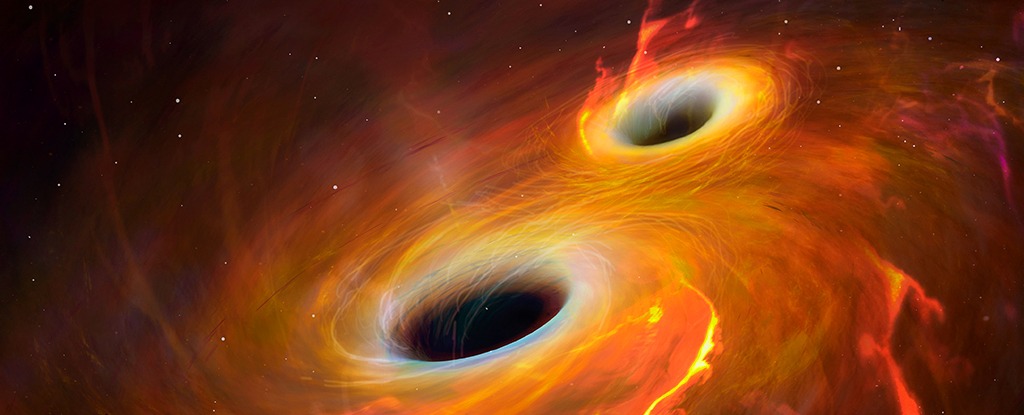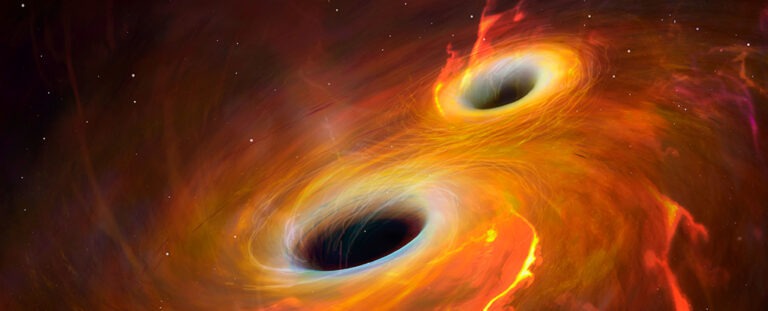Recent Paper Suggests Black Holes May Be More Complex Than Previously Believed
Black holes are engines of chaos, bleeding radiation across the cosmos as they shovel the smeared guts of dead stars into their bottomless stomachs. But when it comes down to it, even the biggest of black holes appear to be relatively simple beasts.
Unlike every other star, planet, and rock in the Universe, everything you need to know about a quiet, solitary black hole can be written under three dot points: mass, angular momentum, and charge – at least, according to the metaphorically-named ‘no-hair theorem’.

Once a glowing mass of star dust has collapsed into a point of unimaginable density, the formerly complex mix of elements vanishes into a pit of no return, effectively turning every black hole into the same thing. In fact, they can all be described by one short, simple equation called the Kerr solution.
‘Hair’ refers to all the other information about the matter that formed a black hole or is being sucked into it – according to our understanding, it should all flow down a one-way street past the black hole’s event horizon, leaving no hair to connect the black hole’s guts with the outside Universe.
But maybe we’re being a little hasty. A team of researchers from the University of Southampton and University of Cambridge in the UK and The Institute of Cosmos Sciences of the University of Barcelona (ICCUB) in Spain has identified circumstances under which black holes might become a little … hairy.
The no-hair theorem relies on a few basic assumptions about their isolation in space, and based on observations of gravitational waves spilling from their collisions, it so far seems to hold true.
But this new paper describes some scenarios where this uniqueness might be violated.
The black hole’s characteristic ‘baldness’ is in some part a feature of its dominance over its immediate neighborhood.
The key assumption here is that the space around a black hole is ’empty’, with no energy influencing the black hole or the matter being sucked into it.
Even in the presence of things like surrounding stars or other black holes, the system will swirl and blaze out of equilibrium for a few millennia before settling into the same, simple single dimple in space time.
Yet the researchers suggest that if each member of a binary black hole system swallows enough material of a particular charge, they should, in theory, become sufficiently charged themselves, enough to repel their partner.
As the team write in their paper, should the repulsion balance the attraction, they could find themselves in a stable equilibrium, creating one mighty beast with multiple horizons – without breaking general relativity.
From our vantage point here on Earth, this perfect combination of attraction and repulsion would make the two black holes appear as one. Much like similar eggs lined up in an egg carton could hide double yolks, solitary black holes we’re currently studying could harbor a slightly more complex makeup.
The Universe might have another force in the form of a cosmological constant, according to this latest analysis. The mysterious ‘push’ behind this expanding space we call dark energy might also be enough to keep some black holes of particular masses from merging, not unlike those pairs of suitably charged black holes.
While this sounds straightforward, orbiting black holes balanced perfectly on currents of flowing space-time don’t look possible at first glance, at least according to current theorems.
Yet according to the researchers, those theorems aren’t without a few limitations of their own.
To dive deep enough into the mathematics to really put the concept to the test, the mathematicians behind the study build up from intuitive applications of old-school physics applied to two identical, non-rotating, non-charged masses, which they then solve with Einstein’s theorizing, before analyzing the hypothetical pair’s properties.
They found the thermodynamic properties of such a partnership would indeed make the two orbiting black holes unstable, which sounds like bad news for finding any real-world examples of these special binary systems.
But by generalizing the equations to including black holes that spin in opposite directions, they showed such exotic ‘hairy’ black holes could stick around, masquerading as a lonely, boring old specimen.
This research was published in Physical Review Letters.
Source: ScienceAlert
Do not forget to share your opinion with us to provide you with the best posts !




0 Comments